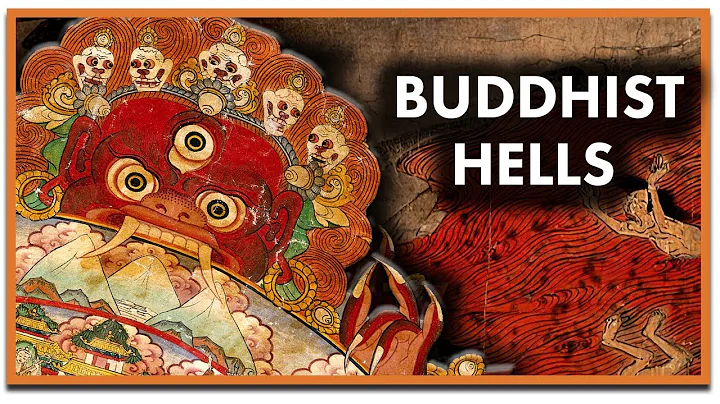The great compassionate Thousand-hand Guanyin Save sentient beings. It is the main Bodhisattva in many Buddhist temples. Their statues are of various materials, and the Golden Silk Nanmu statues are particularly precious. So where is the longest history and the largest in the world? It is still hidden in the "Forbidden City" in the deep mountains of Sichuan - Pingwu Baoen Temple.
Speaking of the Forbidden City, the most famous one is the formerly known as Forbidden City . It was built in 1420 of the Ming Dynasty. In 1460, 40 years later, there was a local official in Mianyang, Sichuan. According to the layout structure of the Forbidden City, it also built a private official residence. It is Pingwu Baoen Temple, which has a history of more than 580 years, also known as the "Depth Mountain Forbidden City".

As we all know, the golden nanmu that built the Forbidden City in Beijing is priceless and famous all over the world. These woods are transported from Sichuan and other places thousands of miles away. The nearby water towers of Baoen Temple in Pingwu, Sichuan, have been harvested on the spot. The columns, beams, rafters, purlins and other wooden materials of the entire temple are all made of precious golden nanmu, which is unique among wooden palaces in the world! What is even more strange is that the treasure of the temple's temple's "Thousand-Handed Guanyin statue" is carved from a complete golden nanmu wood, which is the best in the world.


 Thousand-handed Guanyin in the Great Compassion Hall of Pingwu Baoen Temple is solemn. His body is carved with a thousand-year-old Nanmu up to 9 meters high. 1,004 hands are carved behind him. The Guanyin statue is gentle, tall and symmetrical, with a whole body covered with gold, and the wrinkled lines of the dress and the ornaments are exquisitely carved. The thousands of hands are uneven in front and back, and are arranged in 15 round and lonely lines in the air. Looking up, the statue is as gentle as a huge and blooming golden chrysanthemum, with various shapes and beautiful and spectacular. The golden nanmu can carve such a lifelike Thousand-Handed Guanyin, which is due to the nature of the golden nanmu. Golden nanmu has few straight sections, neither curled nor cracked, and does not rot or carrion for thousands of years. The elegant and quiet texture, the warm and soft texture is like the luster of silk, and the wisp of faint fragrance exudes elegance and nobility in the low-key, which perfectly matches the beautiful meaning of Guanyin's kind love and benefiting all living things. Therefore, for hundreds of years, good men and women have rushed to worship.
Thousand-handed Guanyin in the Great Compassion Hall of Pingwu Baoen Temple is solemn. His body is carved with a thousand-year-old Nanmu up to 9 meters high. 1,004 hands are carved behind him. The Guanyin statue is gentle, tall and symmetrical, with a whole body covered with gold, and the wrinkled lines of the dress and the ornaments are exquisitely carved. The thousands of hands are uneven in front and back, and are arranged in 15 round and lonely lines in the air. Looking up, the statue is as gentle as a huge and blooming golden chrysanthemum, with various shapes and beautiful and spectacular. The golden nanmu can carve such a lifelike Thousand-Handed Guanyin, which is due to the nature of the golden nanmu. Golden nanmu has few straight sections, neither curled nor cracked, and does not rot or carrion for thousands of years. The elegant and quiet texture, the warm and soft texture is like the luster of silk, and the wisp of faint fragrance exudes elegance and nobility in the low-key, which perfectly matches the beautiful meaning of Guanyin's kind love and benefiting all living things. Therefore, for hundreds of years, good men and women have rushed to worship.


There is also a skillful golden nanmu wood wheel turntable in the Huayan Hall of the temple. It is 11 meters high, 7 meters in diameter, and weighs 5 tons. It is divided into 7 layers, which looks like a seven-level pagoda. This is the only Ming Dynasty prayer wheel in China that can rotate normally. It has complex structure, unique production, exquisite craftsmanship, and complex carvings. Various statues of gods, wood carvings, and Buddha statues on the hidden body have high historical and artistic value.


Pingwu Baoen Temple is currently the most well-preserved Ming Dynasty palace-style Buddhist temple complex in China. The material selection, design, construction and carving skills of the entire palace are unique. There is no nail in the mortise and tenon structure of all buildings. There are more than 2,000 types of bracket , and it is known as the "bracket museum" of the ancient building. It is called "a rare legacy in the early Ming Dynasty and a masterpiece of unique ingenuity" by architectural experts. Baoen Temple still stands tall after four major earthquakes. It can be said to be a rare miracle in ancient Chinese wooden structure palaces.
Bao'en Temple was originally a private residence, but why did it become a temple again?
It turned out that During the Zhengtong period of the Ming Dynasty, the local hereditary local official Wang Xi was in charge of ancient Longzhou (now Pingwu County, Sichuan). He was fortunate to meet the designers and craftsmen who built the Forbidden City in Beijing and returned to Sichuan. In order to show his status as a dominant person, the craftsmen required to build the palace of the Forbidden City in a ratio of 1:5. It took 20 years until his son Wang Jian took over. The completed official residence covers an area of 27,000 square meters and has a construction area of 3,500 square meters. Huabiao pillar , Jinshui Bridge, and the cemetery pillars are brilliant, highlighting the royal style everywhere.However, this reduced version of the Forbidden City was reported as evidence of deliberate rebellion, which almost demanded the fate of Wang Xi and his son. In order to prove their innocence, they converted the official residence into a temple, which was the temple's unique temple's Buddha statue, and the Thousand-Handed Guanyin statue and the Wheel-Rotating Sutra Collection. Later, the temple was named "The Temple of Fu Xiu Baoen" and the tablet of "Long Live the Emperor of the Current" was held in the temple to show their gratitude to the emperor and achieve the purpose of avoiding disasters. Pingwu Baoen Temple was listed as national key cultural relics protection unit in 1996, and is now a national 4A-level tourist scenic spot.












![[English] Who Am I - Lecture 1 - Ven. Guan Cheng - DayDayNews](https://i.ytimg.com/vi/KU0fUs2It5o/hq720.jpg?sqp=-oaymwEcCNAFEJQDSFXyq4qpAw4IARUAAIhCGAFwAcABBg==&rs=AOn4CLDFpQUN_QwRfC7bmP4sUadq-RcYdg)
![A Moving Masterpiece 清明上河图 [English narration] - DayDayNews](https://i.ytimg.com/vi/kxff-4GktOI/hqdefault.jpg?sqp=-oaymwEcCOADEI4CSFXyq4qpAw4IARUAAIhCGAFwAcABBg==&rs=AOn4CLBtHGLeUpJNCYDJYnZTuISQ1N5Vag)


